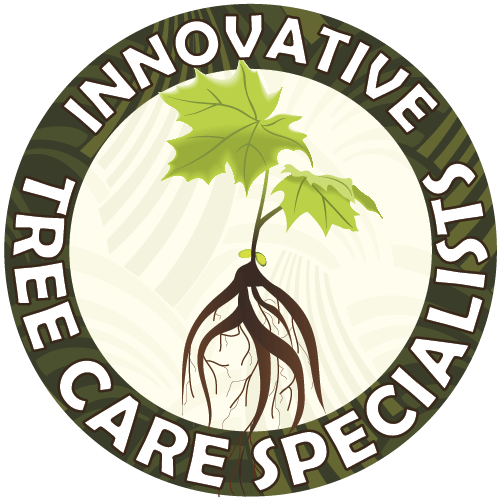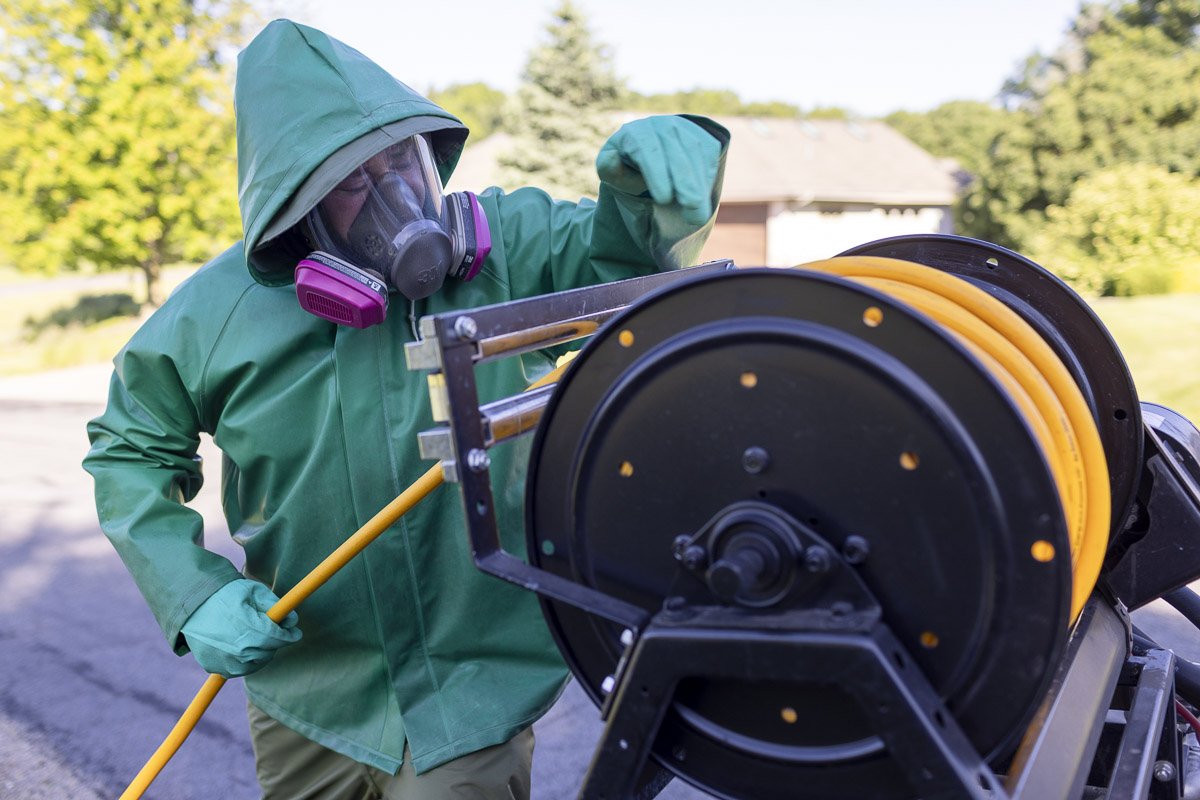Rhizosphaera Needlecast Management
Introduction to Rhizosphaera Needlecast
Rhizosphaera needlecast is one of the most frequently encountered fungal needlecast diseases in our region. It most commonly affects spruce trees, but can infect other conifers as well. Blue spruce is considered highly susceptible to the disease, while White spruce can be more variable in infection severity, and Norway spruce (generally) is more resistant.
Blue Spruce Disfigured by Needlecast
Severe Needlecast on a Blue Spruce
Signs & Symptoms of Rhizosphaera
Brown needles infected with Rhizosphaera kalkhoffii
Rhizosphaera typically presents in the lower, interior canopy first (where there is poor air circulation and moisture is held) and may be initially disregarded as “normal” needle loss due to shady conditions. Early signs of infection include discolored needles, which turn to brown or purple in color, and premature needle drop. Black fruiting bodies, on the underside of the needle, are field diagnosable with a 10x lens. Over time, Rhizo. will spread upwards and throughout the canopy, causing tree health deterioration and loss of tree aesthetic or functional (i.e. privacy screening) value.
Infection occurs primarily during new growth expansion in spring, when spores are spread via wind, water/rain, or animal/insect vector. If caught early enough, trees can be treated for the disease and saved. When left untreated, this disease can prove fatal to the tree, over time, and will predispose the tree to other pests (such as spruce spider mite) and diseases.
Rhizosphaera Needlecast (Blue Spruce)
Rhizosphaera Needlecast (Blue Spruce)
Rhizosphaera Treatment Plan
A comprehensive management plan is best to ensure treatment success:
Raising the canopy to improve air flow and diseased branches is recommended, as is directing sprinklers away for the tree’s canopy.
Once infected, a spray management program is needed with a registered fungicide.
Tree growth regulators can also be utilized as adjunct treatments for high value trees, or for trees that are too large to spray. These work to slow disease spread by shrinking needle cell size, thickening needle cuticle, and stimulating tree defense chemical production.
Proactively Prevent Rhizosphaera
Preventing Rhizosphaera and planting disease-resistant (or less susceptible species) is the best course of action when decided on new plantings for your property. Our arborist is happy to work with you and offer options that may best suit your goals and specific site. Avoiding planting Colorado Blue spruce in our region is recommended. Try a Concolor Fir instead!
Set up a consultation with our arborist today.



